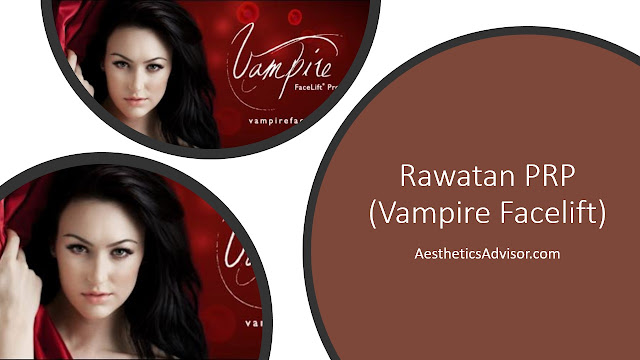Aesthetics 101: Introduction to Hair-Care and Scalp-Care
This is part of the Aesthetics 101 series. The hair-care industry is a billion dollar industry and we see an increasing number of products, treatments and hair centres that are dedicated to hair-care and scalp-care.
There's a lot of people (countless) and 'influencers' who claim to know a lot about hair-care, but actually are they really telling you the truth? Hair-care related treatments and products are often accompanied by marketing myths rather than good scientific data; often indistinguishable by a layperson.

This guide is been designed to encourage people to think critically about the information that you get. We cover the practical essentials of hair-care and scalp-care and we would like to acknowledge that hair-care science is indeed a complex and dynamic space. However, we need to start somewhere. This guide has been developed as a starting point for people who want to know more about hair-care and scalp-care.
The growth rate of hair varies from individual to individual depending on their sex, age, genetic predisposition and countless environmental factors.
In order to preserve the shelf life of many shampoos, parabens are used. A paraben is a preservative and it is used to prevent the growth of bacteria and fungus in shampoos. There are many different types of parabens, namely, butylparaben, ethylparaben, methylparaben, propylparaben and isobutylparaben.
Dandruff is common condition that causes flaky skin on your scalp. This skin often falls off, leaving white flakes on your shoulders.
Some people with dandruff go on to develop hair loss. Is dandruff to blame?
In most cases, dandruff doesn’t directly cause hair loss. However, the itchiness it causes can lead to scratching. This can injure your hair follicles, leading to some hair loss, though not complete baldness. In addition, dandruff can increase hair loss in people with androgenic alopecia, a condition that causes male- and female-pattern baldness.

This guide is been designed to encourage people to think critically about the information that you get. We cover the practical essentials of hair-care and scalp-care and we would like to acknowledge that hair-care science is indeed a complex and dynamic space. However, we need to start somewhere. This guide has been developed as a starting point for people who want to know more about hair-care and scalp-care.
What is Hair?
Your hair shaft is the visible part of your hair and consists of three parts:
The Cuticle - This is the outermost layer and made of dead cells which layer together, visually resembling roof tiles of fish scales.
The Cortex - This is the thickest layer of your hair and where your hair color comes from.
The Medulla - This is the inner most layer of your hair and nearly invisible.
Hair Growth
Hair grows at different rates in different people, the average rate is around 0.6 cm and 3.35 cm per month. Hair growth takes place over three stages:
Anagen - This is the growth phase and lasts several years.
Catagen - This is where hair transitions from growth to resting and takes place over a couple of weeks.
Telogen - This is the resting phase. Your hair will gradually detach to be replaced by a new one.
What is The Scalp?
The scalp is the part of the skin where the hair follicle is rooted to the skin. A healthy scalp is essential for healthy hair. When talking about your scalp, it's usually thought about as dry versus oily. However, an oily scalp could be dry immediately after you have washed it with a shampoo.
Shampoo and Conditioner
The role of the shampoo is to cleanse the hair and scalp; and the conditioner, to protect the hair and scalp.
If you have dry scalp, you may want to stay away from shampoos with sulfates. Sulfates are the foaming agents found in traditional shampoos. These foaming agents can have negative effects when they prove too harsh for your hair, stripping it off its natural oils and drying it to the point where it’s brittle and limp.
Parabens are supposed to inhibit microbial growth in common cosmetic products like lotions, creams, scalp cleansers and so on. However, they may also disrupt the normal hormonal cycle of the body. As mentioned above, parabens can mimic estrogen and reduce the production of this important hormone in women.
Dandruff
Some people with dandruff go on to develop hair loss. Is dandruff to blame?
In most cases, dandruff doesn’t directly cause hair loss. However, the itchiness it causes can lead to scratching. This can injure your hair follicles, leading to some hair loss, though not complete baldness. In addition, dandruff can increase hair loss in people with androgenic alopecia, a condition that causes male- and female-pattern baldness.
If you haven’t already, try using a medicated shampoo designed to help with dandruff. Look for products containing any of the following ingredients:
If you have light-colored hair, you may want to stay away from selenium sulfide, which can cause discoloration.
- pyrinthione zinc
- salicylic acid
- ketoconazole
- selenium sulfide
If you have light-colored hair, you may want to stay away from selenium sulfide, which can cause discoloration.
Hair Loss
Hair loss is common in both men and women. Most likely, you have seen many advertisements and used many hair loss products. No doubt hair loss is a common problem but is not a simple problem to solve. The cause of your hair loss will need to be determined before you consider the hair loss treatment solution that is right and effective for you.
A hair loss treatment solution is not a one size fits all solution. Most hair loss centres in Malaysia have over-simplified solutions and do not dig deep enough to your problem. You may have medical problems or taking medication that are causing you to lose hair? For whatever the reason there might be, an effective hair loss treatment solution needs to be personalised and 'tailor-made' for you.
Types of Hair Loss Treatment and Cost in Malaysia
1. Hair Loss Shampoo
Like any other part of your body, hair needs a variety of nutrients to be healthy and grow (Trusted Source). While factors such as age, genetics and hormones also affect hair growth, optimal nutrient intake is key.
4. PRP (Platelet Rich Plasma) for Hair Loss
PRP for face or the Vampire Facial was made famous by Kim Kardashian. PRP can also be used to treat hair loss.
Here you own blood is re-injected into the skin or scalp. This multiple injections promote new hair growth and increase the strength of the new hair. Please take note that the procedure involves needles, injection and blood; and will need to be performed by a licensed medical doctor in a clean environment.
The cost for PRP hair treatment varies from RM 1,000 to RM 2,500 per session in Malaysia. This price varies depending on location and clinic as well as the PRP preparation kit being used in Malaysia. The number of sessions will also vary according to individual needs.
A hair loss treatment solution is not a one size fits all solution. Most hair loss centres in Malaysia have over-simplified solutions and do not dig deep enough to your problem. You may have medical problems or taking medication that are causing you to lose hair? For whatever the reason there might be, an effective hair loss treatment solution needs to be personalised and 'tailor-made' for you.
Types of Hair Loss Treatment and Cost in Malaysia
1. Hair Loss Shampoo
There are plenty of hair loss shampoos in the Malaysia which can reduce hair loss and promote hair growth. These shampoos do not need prescriptions and can be bought at any clinics or pharmacies such as Guardian and Watson.
The cost of hair loss shampoo will vary from RM 75 – RM 135 per bottle of shampoo.
If you wish to check out our recommended list of hair loss shampoos, visit Best Shampoo for Hair Loss Malaysia.
2. Hair Loss Medication
There are few different medications that can be used to treat hair loss. Popular hair loss medications available in Malaysia include Minoxidil and Finasteride based hair loss medications. Minoxidil works by allowing more nutrients, oxygen and blood to the hair follicle and encouraging healthy hair growth. For men suffering from male pattern baldness (androgenic alopecia), Finasteride works by preventing testosterone being converted into dihydrotestosterone (DHT), a hormone which causes hair to fall out.
The cost of hair loss medication will vary from RM 100 to RM200 depending on the type of medication and treatment plan.
3. Hair Loss Supplements
The cost of hair loss supplement will vary from RM 100 to RM 150 depending on the type of brand. You can purchase most of them from your retail pharmacy outlets such as Guardian or Watsons or purchase them online on Lazada (hair loss supplement).
PRP for face or the Vampire Facial was made famous by Kim Kardashian. PRP can also be used to treat hair loss.
Here you own blood is re-injected into the skin or scalp. This multiple injections promote new hair growth and increase the strength of the new hair. Please take note that the procedure involves needles, injection and blood; and will need to be performed by a licensed medical doctor in a clean environment.
The cost for PRP hair treatment varies from RM 1,000 to RM 2,500 per session in Malaysia. This price varies depending on location and clinic as well as the PRP preparation kit being used in Malaysia. The number of sessions will also vary according to individual needs.
Related: PRP Treatment Malaysia
5. Hair Transplant
A hair transplant is a surgical procedure where hair follicles from any parts of the body are removed and transplanted on areas of the head that are either thinning or have no hair. The most popular method is the FUE method known as Follicular Unit Extraction Hair Transplant.
The average total hair transplant cost in Malaysia can range from RM 9,000 - RM 15,000. The average cost for hair transplant in Malaysia on a per graft basis is about RM 9 (USD 2.17) per graft, i.e. if you are going for 1000 grafts, it will cost you RM 9 x 1000 = RM 9,000 (USD 2,170).
The hair transplant cost may vary from centre to centre in Malaysia. The final cost is highly dependent on your hair loss condition.
The average total hair transplant cost in Malaysia can range from RM 9,000 - RM 15,000. The average cost for hair transplant in Malaysia on a per graft basis is about RM 9 (USD 2.17) per graft, i.e. if you are going for 1000 grafts, it will cost you RM 9 x 1000 = RM 9,000 (USD 2,170).
The hair transplant cost may vary from centre to centre in Malaysia. The final cost is highly dependent on your hair loss condition.
View All Modules > Aesthetics Advisor Beauty School









Comments
Post a Comment